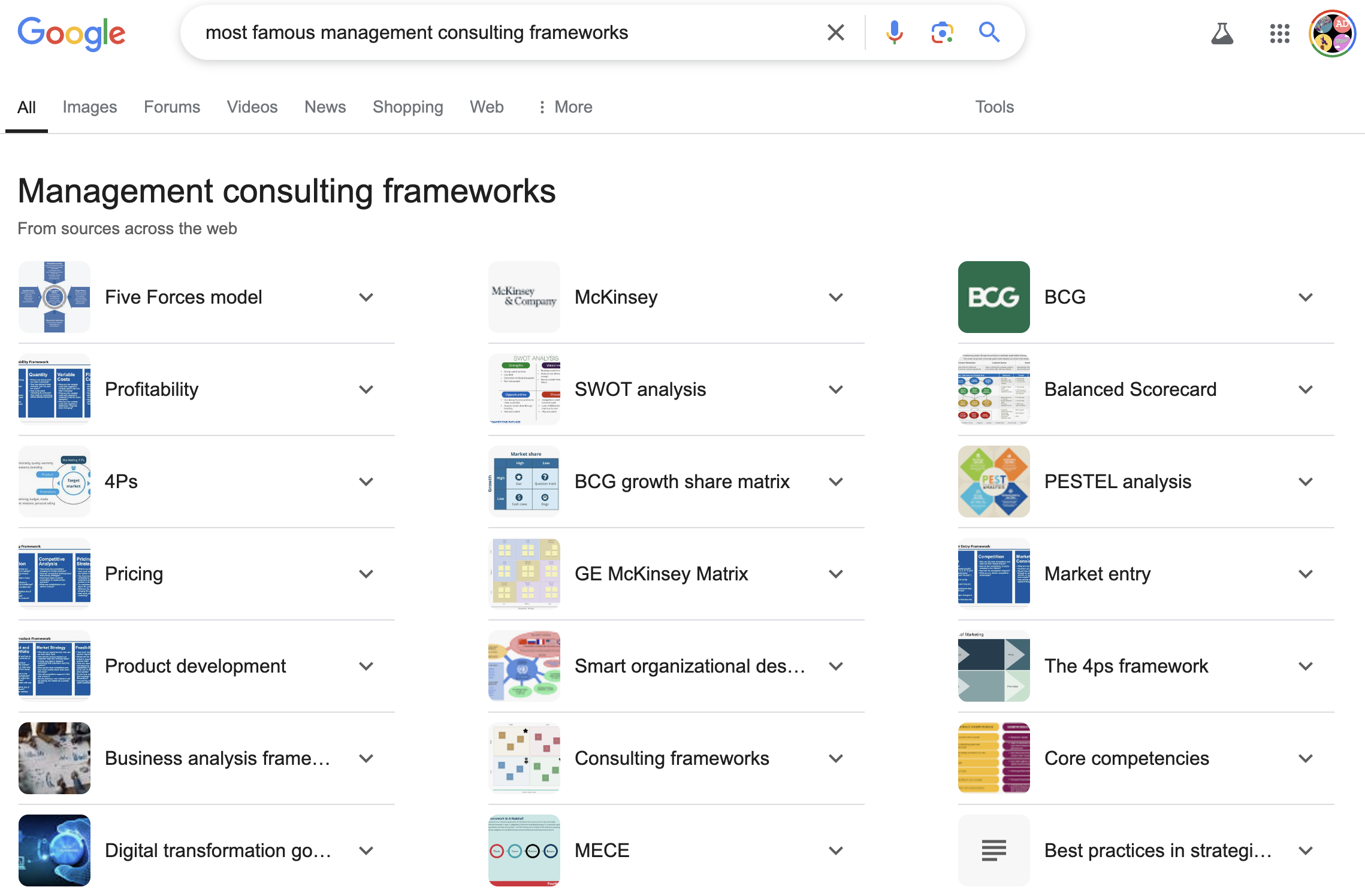Let's talk about frameworks. You know those fancy diagrams consultants draw? I believe they can actually be quite useful :)
Jeet's Law of Frameworks states that there are five things that make a framework useful:
1. It should help you make the most of whatever's hard to get (your scarce resource)
2. It should help you figure out when to say nope!
3. It should show you where you have an unfair advantage
4. It should help you spot what is really valuable
5. It should turn tricky decisions into repeatable ones

1. Let's start with scarce resources. Remember the BCG matrix? Back in the 80s when cash was king, it helped companies figure out where to put their money. Then McKinsey came up with their "portfolio of initiatives" thing because suddenly everyone was fighting over talent instead of cash. Ask yourself: "What's really hard to get right now? What's stopping us from getting stuff done?" That's what your framework should help you manage.
2. Saying no! The BCG matrix wasn't just about where to put money - it was also about which businesses to kill. When Steve Jobs came back to Apple, he looked at their 350 products and was like "We will simplify to 4". Then he drew a super simple grid: Pro & Consumer, Laptop & Desktop. Done! Derek Sivers made it even simpler with his "Hell Yes or No" rule - if it's not a "Hell Yes," it's a no. Warren Buffett has this "Twenty Punch Card" idea - imagine only getting 20 investment decisions in your life! And Amazon's "Two Pizza Team" rule? If two pizzas can't feed your team, it's too big. These frameworks make saying no feel like following a "process" instead of a judgement call. Here's a funny truth about big companies - they love anything that looks like a process and get nervous about anything that looks like a judgment call. Is that ideal? Definitely no! But that's how the corporate world works. So having a framework that turns your "no" into a process? That's like "simplification" gold.
3. Where do you have an edge? Porter's Five Forces is a good example of a framework that helps you see an advantage where others don't. And Jobs-To-Be-Done is good at it too. While everyone else is comparing boring feature lists, JTBD might spot something nobody else sees - like an emotional need that nobody's taking care of.
4. Speaking of seeing what others miss - look at Uber. Everyone thought it was about cars and apps, but the real gold was in having tons of drivers and riders in the same area (density). To invoke Jobs-To-Be-Done again - people don't value the drill - they value the hole in the wall. They don't value the online course - they value the career change it enables. These frameworks help you see past the obvious stuff to what really matters.
5. Let's talk about making tough decisions easier. Amazon has this cool "Working Backwards" thing where they write a fake press release before building anything. Y Combinator's "Default Alive or Default Dead" framework turns scary financial decisions into simple math. Even Netflix has a system for picking shows - no more "I think people might like this" guessing games!
Look, I know some people roll their eyes when someone pulls out a framework in a meeting. But here's the thing - when used right, they're actually super helpful tools for thinking through problems. And that's what this post is all about - taking frameworks seriously (but not too seriously) and understanding what makes them actually useful.